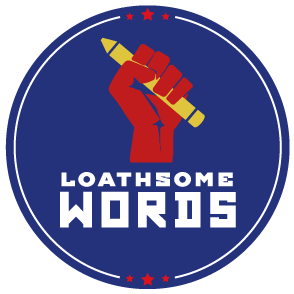 For some time now, I’d been thinking of adding a regular feature to my Twitter output of random thoughts and retweets—maybe something writing-related, as not only am I senior managing editor at Washingtonian (the one who reads every word in the print magazine multiple times), but I teach at the Writer’s Center in Bethesda.
For some time now, I’d been thinking of adding a regular feature to my Twitter output of random thoughts and retweets—maybe something writing-related, as not only am I senior managing editor at Washingtonian (the one who reads every word in the print magazine multiple times), but I teach at the Writer’s Center in Bethesda.
Signage finally sent me over the edge.
I have an aversion to jargon and what I consider trendy, nonsensical, or simply unnecessary versions of clear English. What’s a better alternative to signage? Um, signs.
There probably are instances in which signage is more appropriate—say, a discussion of the systematic application of signs within a particular area. In fact, The American Heritage Dictionary defines the word as “signs considered as a group” or “the design or use of signs and symbols.” But even in most of those cases, signs works just as well.
And so it came to pass that one day I was copyediting an article that referred to “interpretive signage” in a park. A little later, the same story mentioned “educational signs” in a different park. Now, I’m all for word variety and avoiding repetition that clangs—I’m on alert for that all the time—but these were in different sections of the article, about completely different locales. So just make them both signs and be done with it.
That’s when my finger hit the trigger, and a tradition was born:
Today's loathsome word: signage.
— Bill O'Sullivan (@billmatto) February 17, 2016
The next day, I hate-tweeted another piece of jargon (again without comment, because I initially thought it would be cool for my linguistic wrist slaps to have some mystery, along the lines of “if you have to ask…”). I also added a hashtag:
Loathsome phrase of the day: price point. #loathsomewords
— Bill O'Sullivan (@billmatto) February 18, 2016
A couple of weeks later, I retweeted, this time with comment, an NPR piece about Yosemite that twice used iconic, a word that, along with its sibling icon, has reached a level of catchall meaninglessness and overuse far beyond cliché (certain celebrities are no longer household names but icons; beloved snack foods are now iconic; see my other hashtag, #loathsomewordhalloffame). As a bonus, the NPR story also, I noted in my retweet, contained a reference to signage—all in an audio report of less than three minutes.
Why do I dislike signage so much? Maybe it’s the “-age” suffix—the faux importance with which it burdens a fine, upstanding word that needs no help. Excess and empty embellishment are, in fact, among the recurring traits of loathsome words.
In response to one of my nitpicky tweets, someone close to me recently asked, “What about the opposite—beautiful words?”
I said, “I spend 99 percent of my time thinking about that.”
It’s what an editor or a writing teacher should always try to do: help make things more beautiful (not to be confused with flowery). That often involves cutting or changing—or sometimes, in a modest effort to reduce their propagation, tweeting about—the loathsome ones.
Bill O’Sullivan tweets @billmatto.



















